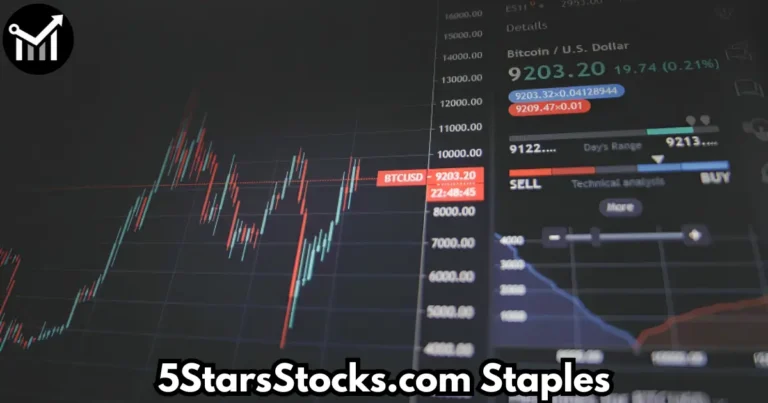The world is in the midst of an energy transformation. From geopolitical tensions to rising global demand and the push toward renewable energy, the oil and gas sector is in constant flux. For investors, this dynamic environment creates both risks and opportunities. But how do you capitalize on energy market shifts without getting caught in individual stock volatility? Enter the oil and gas ETF—a powerful investment tool that offers diversified exposure to this ever-changing sector.
Exchange-Traded Funds (ETFs) focused on oil and gas offer a diversified, cost-effective, and accessible way to gain exposure to the energy sector. Whether you are a seasoned trader or a novice investor, these ETFs can serve as a hedge against inflation, a play on energy prices, or a long-term growth vehicle. With hundreds of ETFs available, identifying the right one is crucial to achieving your financial goals.
This comprehensive guide will walk you through the essentials of oil and gas ETFs, including how they work, their benefits and risks, and the best options available in today’s market. You’ll learn how to evaluate different ETFs based on performance, fees, holdings, and investment strategy. By the end, you’ll have the knowledge and confidence to make informed decisions about investing in this high-potential sector.
What Are Oil and Gas ETFs?
Definition and Functionality
Oil and gas ETFs are investment funds traded on stock exchanges, much like individual stocks. They pool money from investors to buy a diversified portfolio of oil and gas-related assets, such as:
- Shares of major oil and gas companies (e.g., ExxonMobil, Chevron)
- Futures contracts on crude oil and natural gas
- Equipment and service provider stocks (e.g., Schlumberger, Halliburton)
- International energy companies and emerging market exposure
By holding a basket of energy-related securities, these ETFs allow investors to gain broad exposure to the sector without needing to pick individual winners.
Types of Oil and Gas ETFs
1. Equity-based ETFs
Invest in stocks of oil and gas companies.
2. Commodity-based ETFs
Track the price of crude oil or natural gas via futures contracts.
3. Leveraged and Inverse ETFs
Designed for short-term trading, these amplify returns (and risks) by using derivatives to double or triple exposure.
Why Invest in Oil and Gas ETFs?
Benefits of Investing
- Diversification: Spread risk across multiple companies and asset types.
- Liquidity: Traded on public exchanges, allowing quick buy/sell decisions.
- Transparency: Holdings are published regularly.
- Low Costs: Lower expense ratios than actively managed mutual funds.
- Accessibility: Invest with as little as one share through brokerage accounts.
Performance and Market Drivers
The performance of oil and gas ETFs is influenced by:
- Oil and gas prices: Directly affect earnings of energy companies and commodity-based ETFs.
- Geopolitical events: Conflicts in oil-producing regions impact supply and pricing.
- OPEC decisions: Output adjustments can sway global prices.
- Regulatory changes: Shifts in environmental and energy policies affect long-term viability.
- Technological innovation: Fracking, offshore drilling, and clean-tech integration shape company prospects.
Top Oil and Gas ETFs to Watch in 2025
1. Energy Select Sector SPDR Fund (XLE)
- Type: Equity-based
- Expense Ratio: 0.10%
- Top Holdings: ExxonMobil, Chevron
- AUM: Over $35 billion
- Why It Stands Out: XLE is a broad, liquid ETF that mirrors the performance of the energy sector within the S&P 500.
2. United States Oil Fund (USO)
- Type: Commodity-based
- Expense Ratio: 0.60%
- Strategy: Tracks near-month WTI crude oil futures
- Ideal For: Short-term traders and speculators
3. VanEck Oil Services ETF (OIH)
- Type: Equity-based (Oilfield services)
- Expense Ratio: 0.35%
- Focus: Service providers like Schlumberger, Halliburton
- Use Case: Exposure to the technical side of energy production
4. iShares U.S. Oil & Gas Exploration & Production ETF (IEO)
- Type: Equity-based
- Expense Ratio: 0.39%
- Holdings: Focused on mid-sized E&P companies
- Growth Potential: Offers a more aggressive growth profile compared to majors
5. ProShares Ultra Bloomberg Crude Oil (UCO)
- Type: Leveraged
- Expense Ratio: 0.95%
- Leverage: 2x daily performance of crude oil futures
- Risk Profile: High risk/reward; not suitable for long-term investing
How to Choose the Right Oil and Gas ETF
Key Factors to Consider
- Investment Objective: Are you seeking growth, income, or hedging?
- Risk Tolerance: Can you handle commodity volatility and leveraged exposure?
- Expense Ratios: Lower costs eat less into returns over time.
- Holdings: Evaluate the underlying assets for diversification and quality.
- Liquidity: Higher trading volume ensures tighter bid-ask spreads.
Tools and Resources for Evaluation
- Morningstar: Offers in-depth ratings and analysis.
- ETF.com: Comprehensive comparison tools and news.
- Yahoo Finance: Real-time price tracking and ETF profiles.
- SEC Filings: Verify holdings and performance metrics.
Risks and Challenges
Volatility and Market Timing
Oil and gas prices are inherently volatile, influenced by factors beyond investor control. This makes timing crucial but difficult. Mistimed entries or exits can significantly impact returns.
Regulatory and Environmental Risks
With growing climate awareness, regulatory risks are rising. Governments worldwide are implementing stricter emissions policies, which could affect the profitability of oil and gas companies.
Tracking Error
Some ETFs, especially those based on futures contracts, may not perfectly replicate the performance of the underlying commodity due to roll costs and contango.
Oil and Gas ETFs vs Individual Stocks
Pros of ETFs
- Lower Risk: Diversification reduces single-stock exposure.
- Less Research: No need to analyze individual company reports.
- Ease of Access: Buy and sell like any stock.
Pros of Individual Stocks
- Higher Upside Potential: If you pick a winner, returns can far outpace ETFs.
- Dividend Opportunities: Some companies offer attractive yields.
- Control: Direct exposure to companies you believe in.
Best Approach
A blended strategy often works best: use ETFs for core exposure and add individual stocks for targeted plays.
Tax Considerations
Tax Efficiency of ETFs
ETFs are generally more tax-efficient than mutual funds due to their unique “in-kind” redemption process, which helps avoid capital gains distributions.
Commodity ETFs and K-1 Forms
Some commodity-based ETFs are structured as limited partnerships and issue Schedule K-1 forms. These can complicate your tax filing, so always check the ETF’s structure before investing.
Future Outlook for Oil and Gas ETFs
The Energy Transition Dilemma
While the world moves toward cleaner energy, oil and gas will remain crucial for decades. Energy ETFs are adapting by incorporating cleaner technologies and diversifying portfolios.
Emerging Markets and Global Demand
Emerging markets will continue to drive demand for oil and gas, supporting the growth of related ETFs. Geopolitical shifts and global infrastructure development will also play significant roles.
Technological Disruption
AI-driven exploration, enhanced drilling techniques, and renewable integrations are reshaping the energy sector. ETFs that adapt to these changes will likely outperform.
FAQs
What is the best oil and gas ETF for beginners?
The Energy Select Sector SPDR Fund (XLE) is often recommended for beginners due to its low cost, high liquidity, and broad exposure to the U.S. energy sector.
Are oil and gas ETFs a good investment in 2025?
Given ongoing global demand and volatility in energy markets, oil and gas ETFs can be a good tactical or long-term investment, especially when diversified properly.
Can I hold oil and gas ETFs in a retirement account?
Yes, most oil and gas ETFs can be held in IRAs and other tax-advantaged accounts. Be cautious with commodity ETFs that may issue K-1 tax forms.
Do oil and gas ETFs pay dividends?
Equity-based oil and gas ETFs typically pay dividends from the underlying stocks they hold. Check the ETF’s yield and dividend history before investing.
What’s the difference between an oil ETF and a gas ETF?
Oil ETFs track crude oil-related assets, while gas ETFs focus on natural gas. Some ETFs provide exposure to both commodities, while others are more specific.
Read More: GUSH Stock Prediction 2025: Expert Outlook & Price Targets
Conclusion
Oil and gas ETFs offer an efficient, diversified, and liquid way to gain exposure to a historically lucrative sector. With options ranging from equity-based to leveraged and commodity-tracking funds, investors have a plethora of choices tailored to different risk appetites and investment goals. Understanding how these ETFs work, what drives their performance, and how to select the right one is essential for success.
As the energy landscape evolves, having a thoughtful strategy for oil and gas investments becomes increasingly vital. Whether you use ETFs as a core holding or a tactical play, staying informed and agile will help you harness the sector’s potential. Start exploring oil and gas ETFs today and position your portfolio for tomorrow’s energy-driven opportunities.




